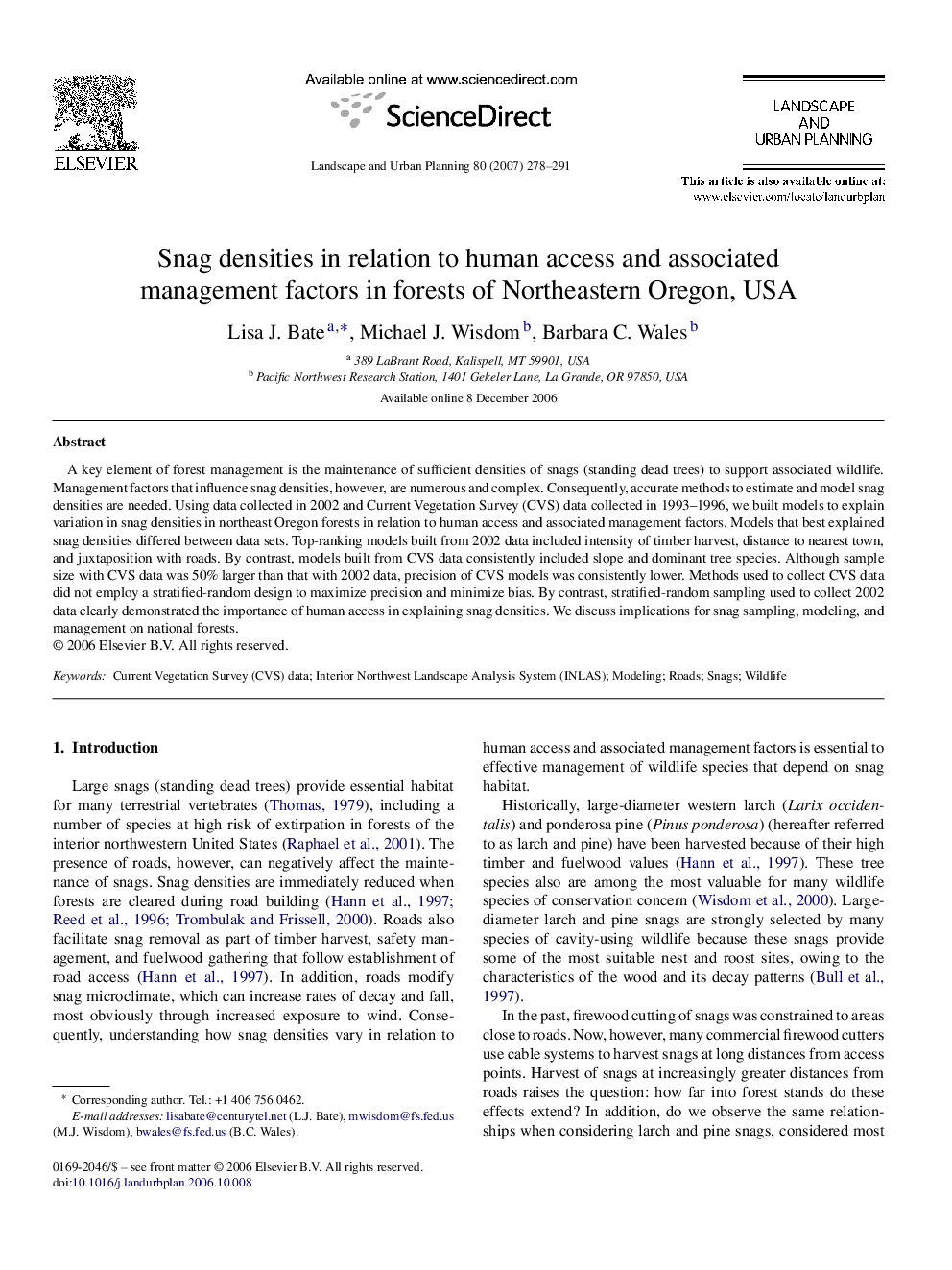| کد مقاله | کد نشریه | سال انتشار | مقاله انگلیسی | نسخه تمام متن |
|---|---|---|---|---|
| 1050474 | 945695 | 2007 | 14 صفحه PDF | دانلود رایگان |

A key element of forest management is the maintenance of sufficient densities of snags (standing dead trees) to support associated wildlife. Management factors that influence snag densities, however, are numerous and complex. Consequently, accurate methods to estimate and model snag densities are needed. Using data collected in 2002 and Current Vegetation Survey (CVS) data collected in 1993–1996, we built models to explain variation in snag densities in northeast Oregon forests in relation to human access and associated management factors. Models that best explained snag densities differed between data sets. Top-ranking models built from 2002 data included intensity of timber harvest, distance to nearest town, and juxtaposition with roads. By contrast, models built from CVS data consistently included slope and dominant tree species. Although sample size with CVS data was 50% larger than that with 2002 data, precision of CVS models was consistently lower. Methods used to collect CVS data did not employ a stratified-random design to maximize precision and minimize bias. By contrast, stratified-random sampling used to collect 2002 data clearly demonstrated the importance of human access in explaining snag densities. We discuss implications for snag sampling, modeling, and management on national forests.
Journal: Landscape and Urban Planning - Volume 80, Issue 3, 30 April 2007, Pages 278–291